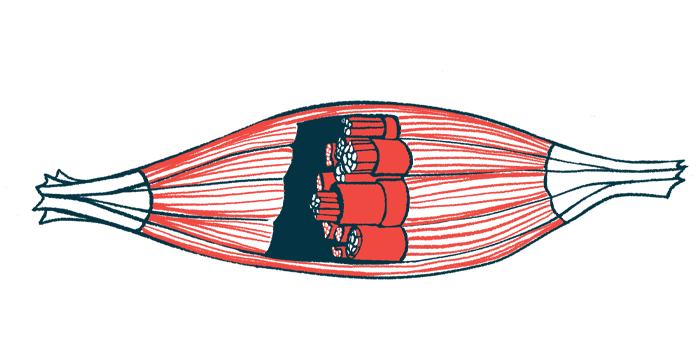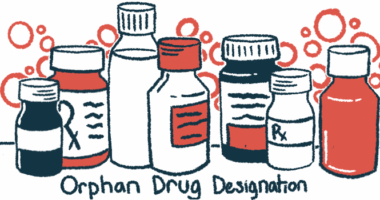Low muscle mass linked to worse outcomes with chemoradiotherapy
Shorter survival found for pancreatic cancer patients undergoing CRT: Study

Low muscle mass in people with inoperable pancreatic cancer undergoing chemoradiotherapy, or CRT, was linked with more treatment-related toxicities and shorter overall survival in a new study by researchers in France.
The researchers noted that age-related progressive loss of muscle mass and strength, known medically as sarcopenia, has been associated with poor outcomes among cancer patients, especially those with pancreatic cancer. Even with similar muscle mass, myosteatosis — excess fat deposits in muscle tissue — has also been linked with worse cancer outcomes.
According to the researchers, in this study, “patients with low muscle mass experienced more weekly treatment-induced toxicities and poorer outcomes during CRT” for inoperable pancreatic cancer. They noted, however, that having myosteatosis “did not influence CRT-related toxicity and survival.”
Chemoradiotherapy, or CRT for short, is a cancer treatment that combines chemotherapy and radiotherapy.
The findings of this study highlight that “early detection of muscle mass reduction could optimize the management of patients with [inoperable pancreatic cancer] through nutritional monitoring and adapted physical activity as key points in cancer care,” the team wrote.
Titled “Impact of low muscle mass and myosteatosis on treatment toxicity and survival outcomes in non-resectable pancreatic cancer patients treated with chemoradiotherapy,” the study was published in the European Journal of Clinical Nutrition.
Scant data available on impact of muscle mass in chemoradiotherapy
Studies involving pancreatic cancer patients have shown benefits with CRT treatment in terms of local tumor control. However, such treatment also has been associated with side effects, such as abdominal pain, nausea, vomiting, or diarrhea.
Little is known, though, about the impact of muscle mass and myosteatosis on treatment-related toxicity and survival outcomes in people with non-resectable, or inoperable, pancreatic cancer treated with CRT.
To learn more, a research team from several institutions in France, primarily in Reims, reviewed the medical records of 85 patients treated with CRT for non-resectable pancreatic adenocarcinoma, the most common type of pancreatic cancer.
Overall, 61% of the patients were women, and most were older than 65. Nearly all — 88% — had low muscle mass, and about 1 in 5 (22%) had myosteatosis. The researchers found that all of the patients with myosteatosis also had low muscle mass. Conversely, 1 in every 10 patients (12%) had no signs of low muscle mass or myosteatosis. Patients with low muscle mass were significantly older and had a significantly lower body mass index, or BMI, a measurement that estimates a person’s body fat based on a ratio of weight to height.
Adverse effects were reported for each week of treatment. Dose-limiting toxicity, or DLT, was defined as any side effects leading to dose reduction, treatment delays, or permanent discontinuation of the treatment.
A total of 531 toxicities were observed during CRT, mainly nausea in week three, affecting 50% of patients, and thrombocytopenia, or low platelet counts, seen in 34% of patients, also in week three. One-third of patients in week five experienced diarrhea and/or anemia.
Most toxicities (75%) were mild, or grade 1, with a few cases of severe, or grade 3, toxicity observed for nausea, vomiting, and diarrhea. Six patients reported hand-foot syndrome, marked by pain, redness, swelling, and shedding skin on the hands and feet.
A chemotherapy-related DLT was experienced by 11 patients (13%). Six patients (7%) underwent dose reductions, while eight (9%) had chemotherapy delays.
The most frequent DLTs were thrombocytopenia, affecting 55% of patients, nausea and/or vomiting, both seen for 36%, and hand-foot syndrome, affecting 30%. One patient (1.2%) experienced a radiotherapy-related DLT and stopped treatment for 11 days because of nausea and vomiting. No deaths due to treatment-induced toxicity were reported.
Statistically, low muscle mass was significantly associated with more weekly toxicities during the second and fifth weeks of treatment. Patients with low muscle mass also experienced significantly more nausea and anemia. By comparison, myosteatosis was not associated with more weekly toxicities or DLTs.
Study finds low muscle mass significantly linked to shorter overall survival
The median overall survival from a diagnosis of pancreatic cancer was 20.6 months, or slightly longer than 1.5 years. From the start of CRT, median overall survival was 17.1 months, or slightly shorter than 1.5 years. During follow-up, 71 patients died, with 82% of deaths related to pancreatic cancer.
Here, low muscle mass was significantly associated with shorter overall survival, the researchers noted. A performance status of 2 on the Eastern Cooperative Oncology Group (ECOG) — meaning a patient can walk at least 50% of the time but cannot work — was also significantly linked with shorter survival. The ECOG performance status scale is a tool developed to assess a patient’s functional status and ability to tolerate cancer therapies, especially chemotherapy. Myosteatosis had no impact on survival time.
This study highlights the need to optimize the management of patients with [pancreatic cancer] in current practice. … Since low muscle mass was associated with CRT-related toxicities, targeted therapeutic interventions could be considered to prevent DLT [dose-limiting toxicity] in this frail population.
A sensitivity analysis involving only patients with locally advanced pancreatic cancer — meaning the cancer has spread in and around the pancreas — confirmed the impact of low muscle mass on survival. The effect of an ECOG performance status of 2, however, was no longer significant, given the small number of patients in this subgroup, the team noted.
Lastly, progression-free survival, the length of time a patient lives with the disease without worsening, was similar between patients based on muscle mass or density.
Overall, the researchers concluded that those with low muscle mass had poorer outcomes with CRT and experienced more weekly treatment-induced toxicities.
“This study highlights the need to optimize the management of patients with [pancreatic cancer] in current practice,” the researchers wrote. “Since low muscle mass was associated with CRT-related toxicities, targeted therapeutic interventions could be considered to prevent DLT in this frail population.”








